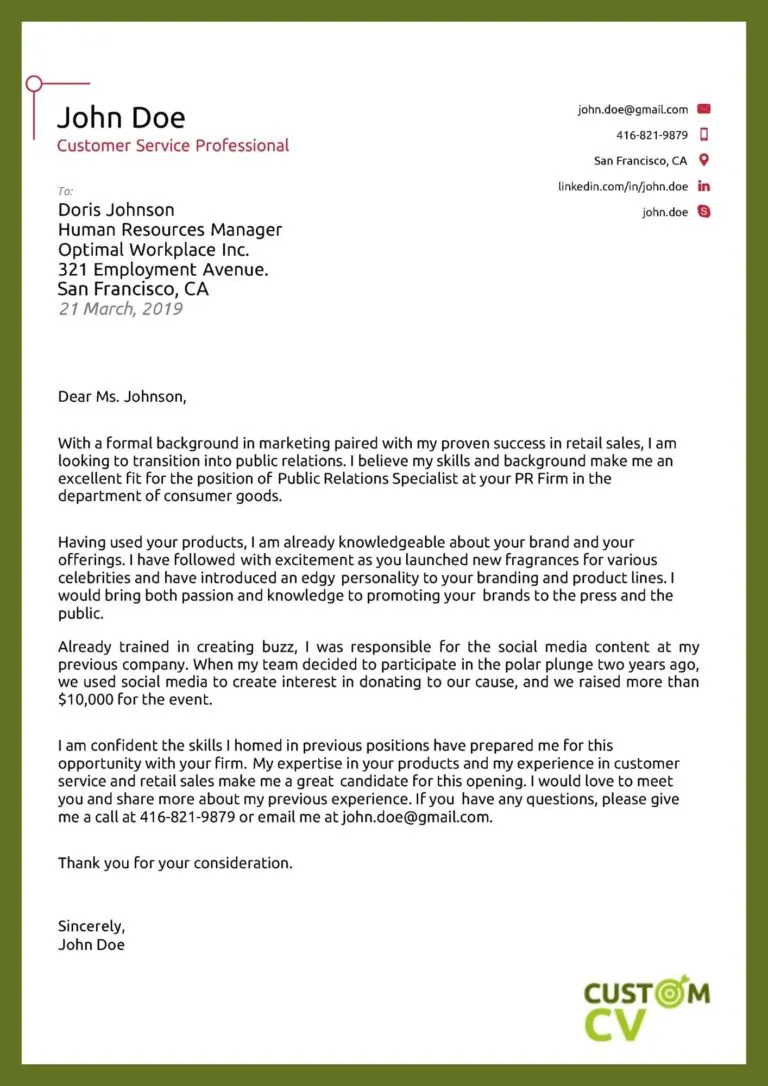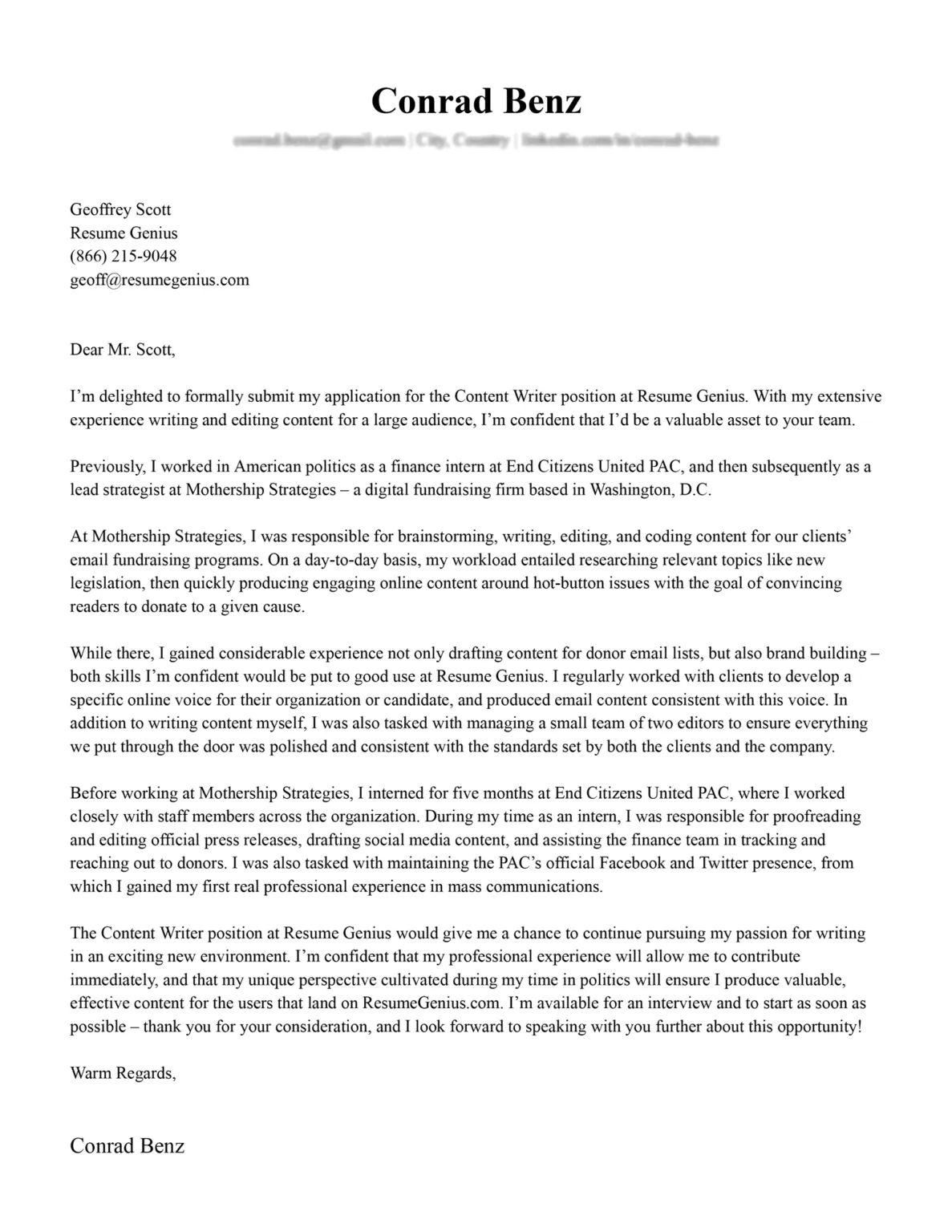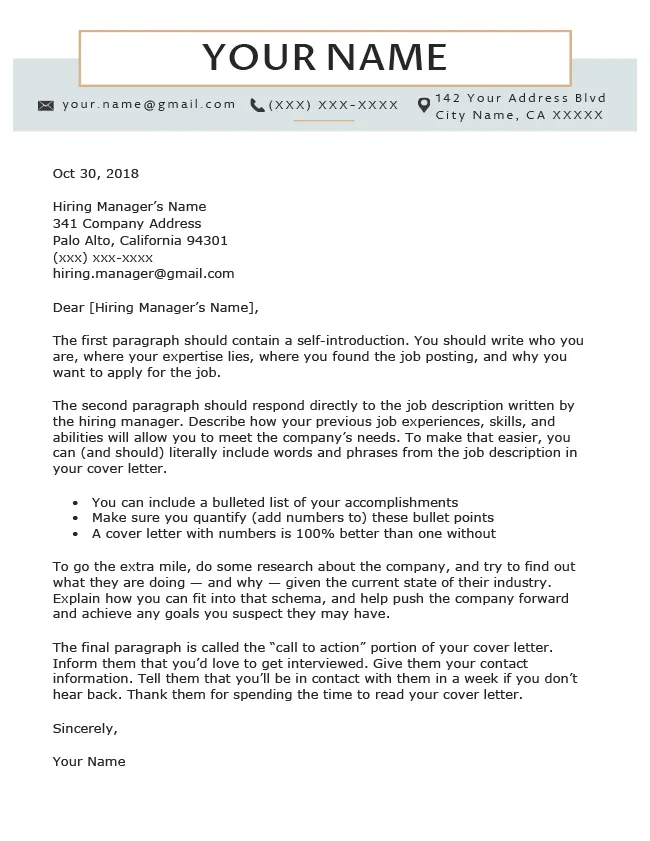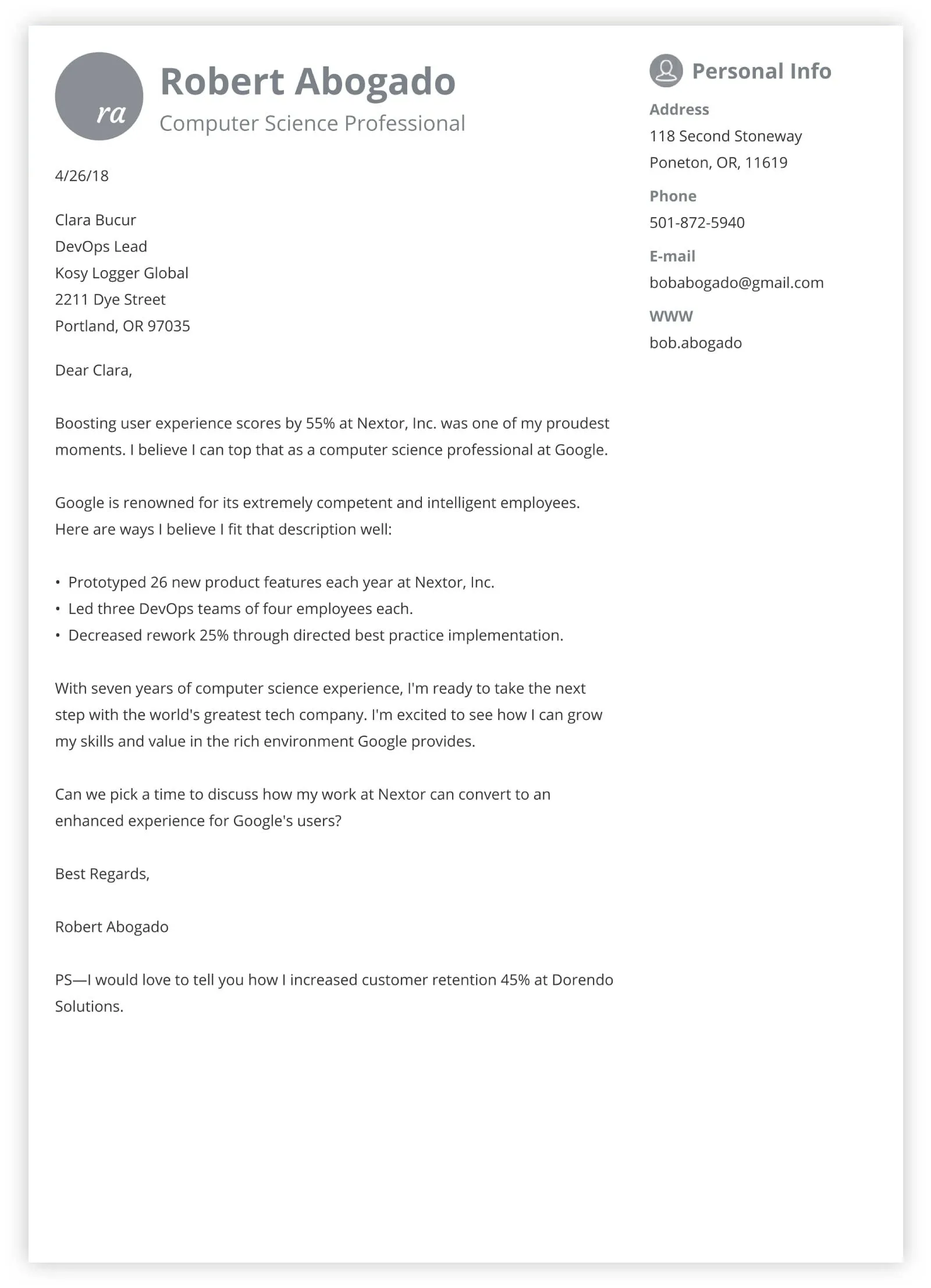What is a Cover Letter
A cover letter is a crucial document that accompanies your resume when applying for a job. It serves as a personalized introduction, allowing you to elaborate on your skills, experiences, and why you are the ideal candidate for the position. Unlike a resume, which provides a summary of your qualifications, a cover letter enables you to showcase your personality, express your enthusiasm for the role, and demonstrate how your abilities align with the specific requirements of the job. A well-crafted cover letter can significantly increase your chances of getting noticed by a hiring manager and securing an interview.
Why Is a Cover Letter Important
Cover letters are important because they provide a platform to connect your skills to the job. They show your understanding of the job requirements, it’s also your opportunity to express your interest in the company. A strong cover letter personalizes your application, setting you apart from other applicants who may have similar qualifications. By demonstrating your enthusiasm, showcasing your personality, and illustrating how you can contribute to the organization’s success, a cover letter significantly increases your chances of securing an interview. It’s an opportunity to make a great first impression and persuade the hiring manager to consider you.
Key Components of a Cover Letter

A well-structured cover letter typically includes several essential components that work together to create a compelling narrative. This includes a professional header with your contact information, a formal greeting, a captivating introduction that immediately grabs the reader’s attention, body paragraphs that highlight your relevant skills and experiences, a section that allows you to tailor your letter to the specific job, a closing statement expressing your enthusiasm and a call to action, and a proper closing. Each component plays a vital role in conveying your qualifications and demonstrating your suitability for the position. The following sections will detail each of these key elements.
Header and Contact Information
The header of your cover letter sets the stage for professionalism and easy communication. It should prominently display your full name, address, phone number, and email address. Ensure your email address is professional and appropriate. Below your contact information, include the date, followed by the hiring manager’s name (if known), their title, and the company’s address. Using a clean, easy-to-read font ensures that your information is easily accessible and presents a polished first impression. This header is critical for the hiring manager to quickly and easily contact you.
Professional Greeting
The greeting of your cover letter is your first opportunity to make a positive impression. If you know the hiring manager’s name, address your letter to them directly using ‘Dear Mr./Ms./Mx. Last Name.’ This personal touch shows that you’ve done your research and are genuinely interested in the role. If the hiring manager’s name is not available, use a general but professional greeting such as ‘Dear Hiring Manager’ or ‘Dear [Company Name] Hiring Team.’ Avoid overly casual greetings like ‘Hi’ or ‘Hello,’ as they might be perceived as unprofessional. The greeting sets the tone for the entire letter, so ensure it is both respectful and engaging.
Introduction: Grab Their Attention

Your introduction is your chance to immediately capture the hiring manager’s interest. Start with a concise statement that highlights your enthusiasm for the position and the company. Briefly mention how you learned about the opportunity and why it excites you. You can also briefly mention a key skill or achievement that directly aligns with the job requirements to demonstrate your immediate value. The introduction should set the stage for the rest of the letter, making the reader eager to learn more about your qualifications and experience. The goal is to show you’ve tailored your letter to their specific role.
Body Paragraphs Highlight Your Skills
The body paragraphs of your cover letter are where you showcase your skills and experiences in detail. Focus on the most relevant qualifications that align with the job description. Instead of simply listing your responsibilities, provide specific examples of your achievements and how you have used your skills to create positive outcomes. Use the STAR method (Situation, Task, Action, Result) to structure your examples, providing context, outlining the tasks you undertook, describing the actions you took, and quantifying the results of your efforts. This approach makes your accomplishments tangible and demonstrates your ability to perform the job successfully. Remember to tailor your examples to each job.
Tailor Your Letter to the Job
Customizing your cover letter for each job application is critical to demonstrating your genuine interest and suitability. Carefully review the job description and identify the key skills, experiences, and qualifications that the employer is seeking. In your cover letter, specifically address these requirements by providing examples of how your background aligns with their needs. Highlight the relevant experiences and skills that make you a strong fit for the role. By tailoring your letter, you show the hiring manager that you’ve done your research and are genuinely interested in the specific opportunity, making you stand out from generic applicants.
Use Keywords from the Job Description

Incorporating keywords from the job description into your cover letter is an effective strategy to capture the attention of applicant tracking systems (ATS) and hiring managers. Analyze the job posting to identify the essential skills, qualifications, and responsibilities. Naturally weave these keywords into your cover letter, demonstrating that your skills align with the job’s requirements. This also helps to signal to the hiring manager that you have the necessary experience and are likely a good fit for the role. Use keywords in your introduction, body paragraphs, and even your closing to make your letter more impactful and tailored.
Showcase Achievements and Quantify Results
Instead of simply listing your job duties, use your cover letter to showcase your achievements. Use quantifiable results and data to demonstrate the impact of your contributions. For example, instead of saying ‘Managed social media accounts,’ say ‘Increased social media engagement by 30% in six months.’ This approach makes your accomplishments tangible and provides concrete evidence of your abilities. Include specific examples and metrics to illustrate your successes and demonstrate your value to potential employers. Quantifying your results makes your cover letter more compelling and memorable.
Closing the Cover Letter
Your closing should reiterate your interest in the position and company while expressing your enthusiasm for the opportunity. Briefly summarize your key qualifications and why you are an ideal fit. Use a confident and professional tone, reaffirming your belief that you can make a valuable contribution. This is also the place where you can politely thank the hiring manager for their time and consideration, and include a call to action, such as stating that you look forward to hearing from them or that you are available for an interview. Make sure to include a formal closing, such as ‘Sincerely’ or ‘Best regards,’ followed by your typed name.
Express Enthusiasm and Call to Action

Throughout your cover letter, express your enthusiasm for the position and the company. Let your passion for the role shine through. This can be accomplished by expressing your understanding of the company’s mission and your excitement about the opportunity to contribute. Include a call to action to encourage the hiring manager to take the next step. This can be a simple statement that you are available for an interview or that you look forward to discussing your qualifications in more detail. A call to action encourages the reader to take the next step and increases the likelihood of a positive response. Make it clear and easy for them to move forward.
Proofreading and Formatting
Before submitting your cover letter, thoroughly proofread it for any errors in grammar, spelling, and punctuation. Errors can detract from your professionalism and undermine your credibility. Use a grammar checker and, ideally, have someone else review your letter to catch any mistakes you might have missed. Ensure your formatting is clear and consistent, using a professional font, appropriate margins, and a well-organized layout. Proper formatting and proofreading demonstrate your attention to detail and commitment to presenting a polished application. Your cover letter is an indication of your commitment to quality.
Common Cover Letter Mistakes to Avoid
Avoid these common cover letter mistakes. Generic cover letters are one of the biggest mistakes. Always tailor your letter to the specific job. Another big mistake is grammatical errors and typos, always proofread thoroughly. Avoid being too casual or informal in your tone and language. Do not include irrelevant information or go on too long. Lengthy cover letters can lose the reader’s attention. Avoid repeating information that is already on your resume. Finally, do not use overly complex language or jargon that is not easy to understand.
Length and Tone Considerations

Keep your cover letter concise and focused, aiming for a length of one page. A well-written letter should be easy to read and digest. Maintain a professional and confident tone throughout the letter. Demonstrate your enthusiasm for the role, but avoid being overly familiar or casual. Choose a professional font and maintain consistent formatting. Your goal is to present yourself as a qualified and enthusiastic candidate who is ready to contribute to the company’s success. The language should reflect your understanding of the job and company.
Cover Letter Examples and Templates
Using cover letter examples and templates can be a helpful starting point when crafting your own. There are numerous resources available online, including those provided by career websites and professional organizations. When using a template, customize it to fit your specific experience and the requirements of the job. Remember to always tailor the content to match the job description and company culture. Consider different types of templates for different roles. These can help you understand how to organize your thoughts and ensure you include all the necessary information. Adapting these examples will make your letter stand out and be more effective.
